Joseph C. Osborn
A Resourceful Reframing of Behavior Trees
Mar 24, 2018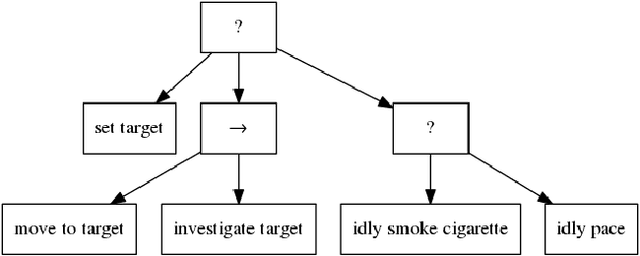


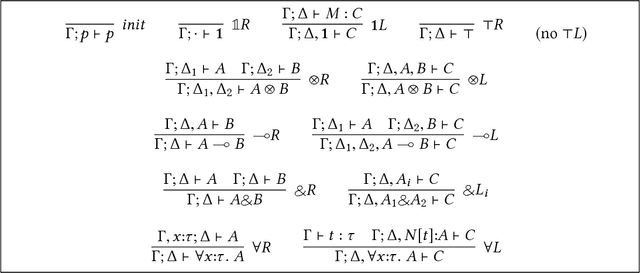
Abstract:Designers of autonomous agents, whether in physical or virtual environments, need to express nondeterminisim, failure, and parallelism in behaviors, as well as accounting for synchronous coordination between agents. Behavior Trees are a semi-formalism deployed widely for this purpose in the games industry, but with challenges to scalability, reasoning, and reuse of common sub-behaviors. We present an alternative formulation of behavior trees through a language design perspective, giving a formal operational semantics, type system, and corresponding implementation. We express specifications for atomic behaviors as linear logic formulas describing how they transform the environment, and our type system uses linear sequent calculus to derive a compositional type assignment to behavior tree expressions. These types expose the conditions required for behaviors to succeed and allow abstraction over parameters to behaviors, enabling the development of behavior "building blocks" amenable to compositional reasoning and reuse.
Automatic Mapping of NES Games with Mappy
Jul 12, 2017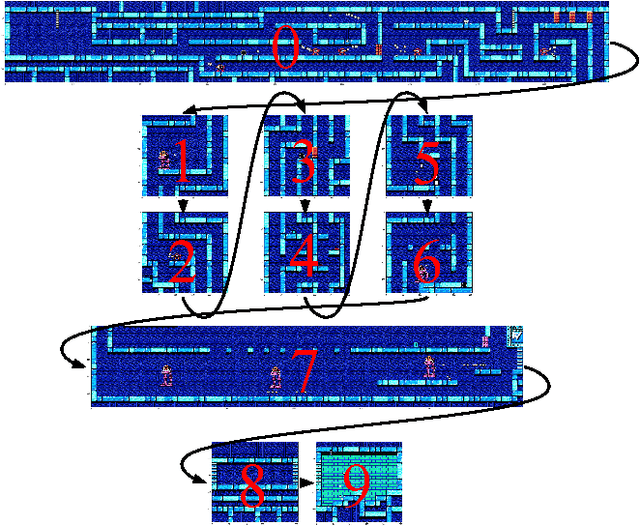
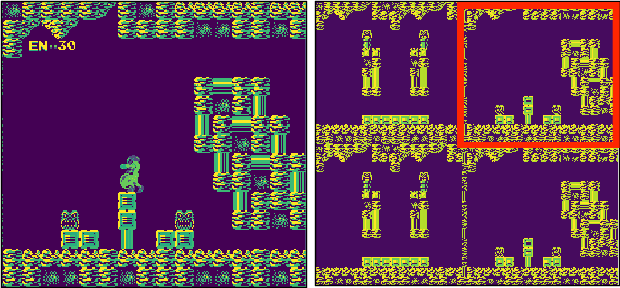
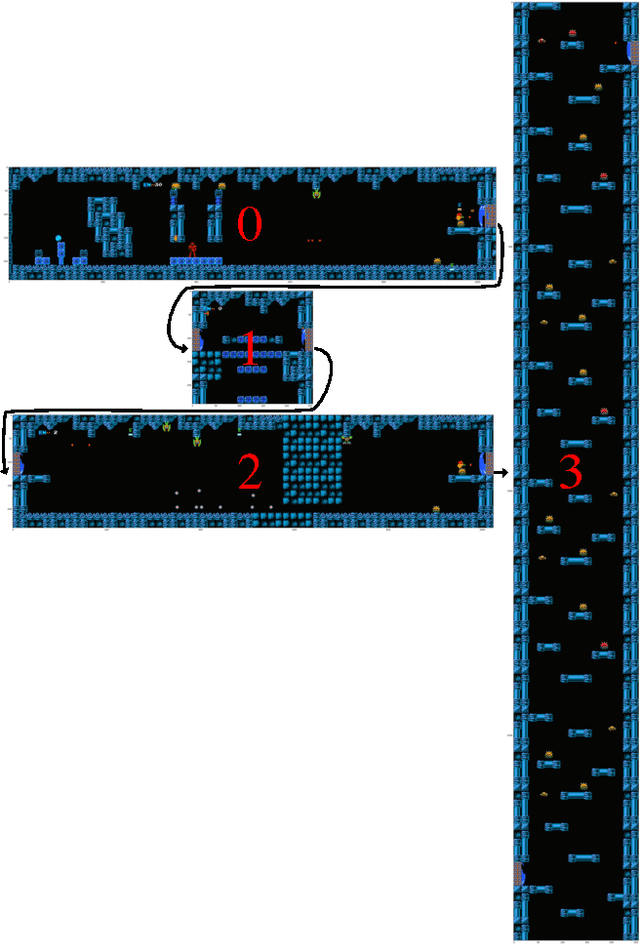

Abstract:Game maps are useful for human players, general-game-playing agents, and data-driven procedural content generation. These maps are generally made by hand-assembling manually-created screenshots of game levels. Besides being tedious and error-prone, this approach requires additional effort for each new game and level to be mapped. The results can still be hard for humans or computational systems to make use of, privileging visual appearance over semantic information. We describe a software system, Mappy, that produces a good approximation of a linked map of rooms given a Nintendo Entertainment System game program and a sequence of button inputs exploring its world. In addition to visual maps, Mappy outputs grids of tiles (and how they change over time), positions of non-tile objects, clusters of similar rooms that might in fact be the same room, and a set of links between these rooms. We believe this is a necessary step towards developing larger corpora of high-quality semantically-annotated maps for PCG via machine learning and other applications.
Mechanics Automatically Recognized via Interactive Observation: Jumping
Jul 12, 2017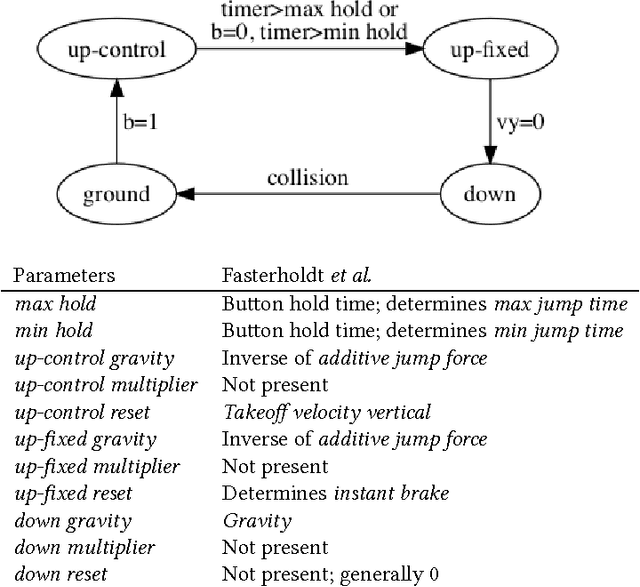
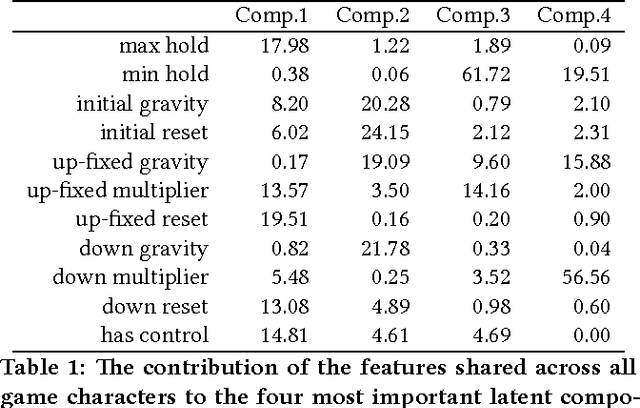
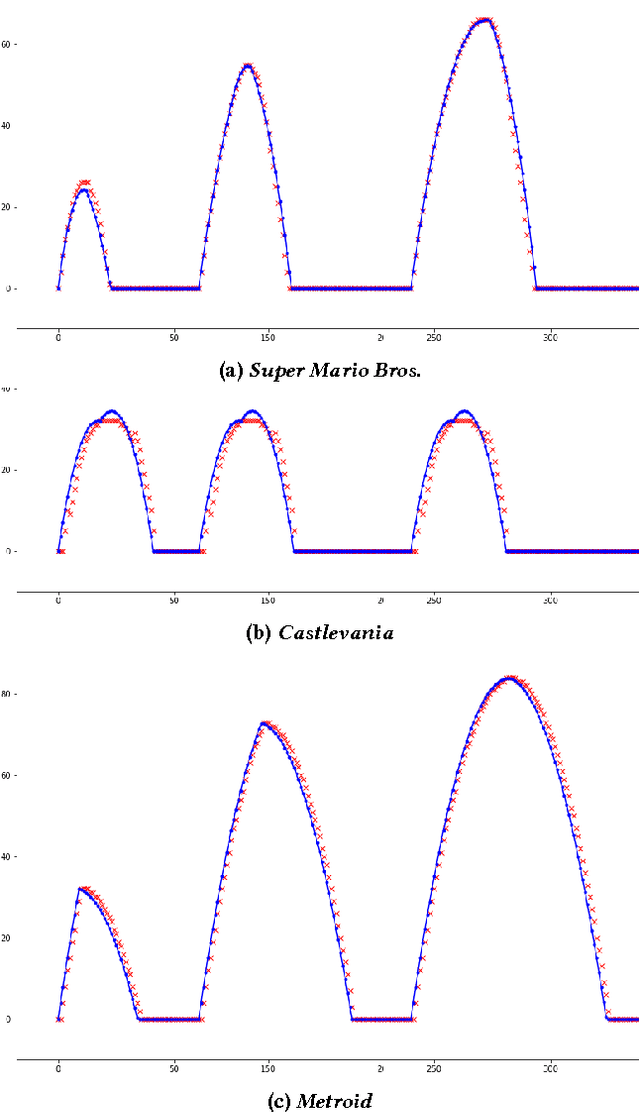
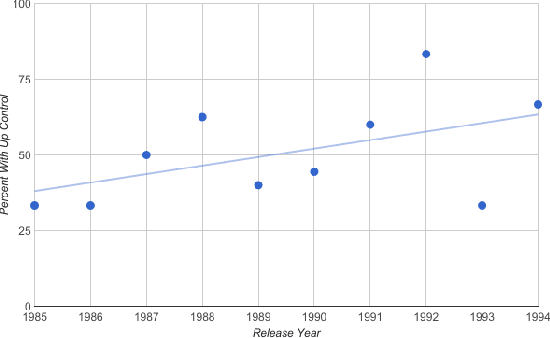
Abstract:Jumping has been an important mechanic since its introduction in Donkey Kong. It has taken a variety of forms and shown up in numerous games, with each jump having a different feel. In this paper, we use a modified Nintendo Entertainment System (NES) emulator to semi-automatically run experiments on a large subset (30%) of NES platform games. We use these experiments to build models of jumps from different developers, series, and games across the history of the console. We then examine these models to gain insights into different forms of jumping and their associated feel.
 Add to Chrome
Add to Chrome Add to Firefox
Add to Firefox Add to Edge
Add to Edge